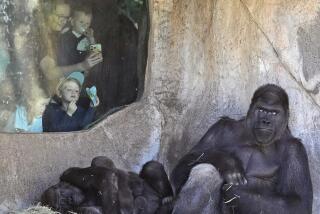100-million-year-old fossil shows spider about to attack its prey
Oregon State University researchers have discovered a spider and a wasp frozen together in a piece of amber, a moment in time from the Early Cretaceous period.
The find, which was dug up in a northern region of Myanmar called Hukawng Valley, is believed to be the first fossil capturing a spider about to attack its prey.
Just seconds before the spider was about to strike, resin flowed over the insects, preserving them both -- and the moment. The discovery was reported in the latest issue of the journal Historical Biology.
According to the report, the amber dates to about 100 million years ago -- the age of the dinosaurs. Both the spider and the wasp species are extinct.
The freeze-frame image of predator attacking prey is not the only interesting feature in the fossil, however. The amber held both an adult and a juvenile spider, and the researchers write that the two of them together represents the “first fossil evidence of sociality in spiders.”
Perhaps the spiders were about to share dinner.
You can read a summary of the study here.
Return to the Science Now blog.






